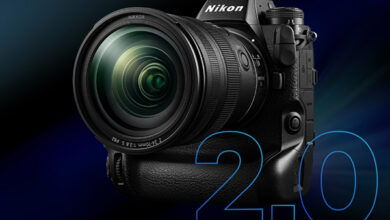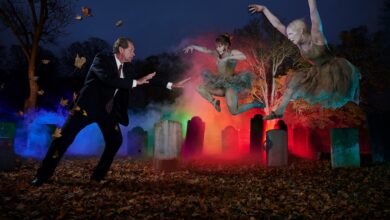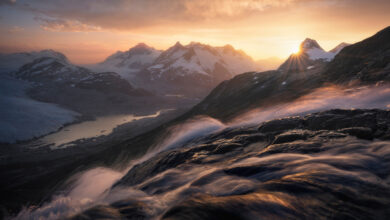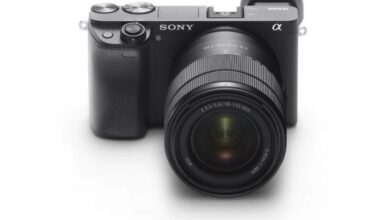Is It Time To Sell Your Camera and Improve Your Adjectives? The Camera Is Dead, Long Live AI
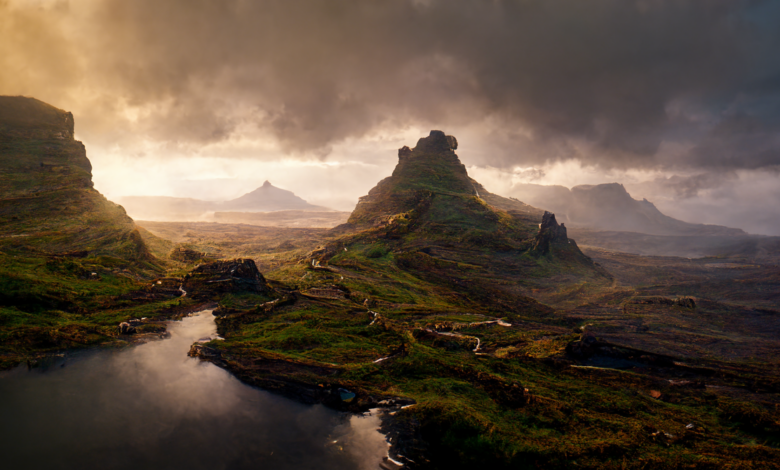
Imagine a world where words can create images. Now imagine what that would do for the art world and photography. Well, it’s here and it’s not going to go away. A few sentences can create an image. Describe the scene using a few simple adjectives and the likes of Midjourney will create an image using your inputted text. This is all possible because of the technology used in this app and of course the vast database that is the internet.
Visual Style
Midjourney has its own style, instantly recognizable for most of the images, I suppose similar in development to that of an art student, observing and learning, inspired by the world around except in this case the world around us is everything we as humans have ever fed into the internet; perhaps James Cameron foresaw the future with Skynet. It has mass appeal for creation due to the simple input method, a few adjectives or complete descriptive sentences from your imagination of what you would like to see or be created, and then AI gets to work with the 64 zettabytes of information it has at hand to create something based on your input. Voila, new artwork has been created, and then you can refine your creation from there. Can’t afford a J.W Turner print or painting? Just create one for yourself in that style it only takes a couple of minutes. Sure it’s not the real thing but hey, it’s an original by you; or is it?
Are the Users Artists?
AI is going to change the history of art as we know it, and at the moment AI generated artworks are everywhere, you can’t open a social media site without browsing past 10 or 20 of them in under five minutes. Are they works of art? Yes. Are the creators artists? And if not, what are they considered to be? My current thinking on this is if I type in my takeaway order to Uber Eats does that make me a chef? I’ll let you decide on that one.

AI Image Creation and Photography
For now, you can mostly tell what has been created and what is a real photograph, but that is for now. The development and pace that this and similar apps create photorealistic images are moving at an exponential rate and I would hazard a guess that within a year if not sooner there will be more and more photographic images that appear with barely indistinguishable differences that will have been created using this type of software. Adobe Photoshop with its Neural Filters will have this AI feature in the near future once they have perfected it so it’s not going to go away. Not simply because Adobe has it but simply because this creation method is being cultivated by us.

Another feature in development from Adobe is realistic faces in the portrait generator, again basically AI generated drawn from the image information accumulated on the internet. That is simply a guess on my part with the creation process but going by how the generated artworks from the likes of MidJourney are created this seems to be the most logical way.
Does this mean then that if your model isn’t exactly what you are looking for you could replace their face with the portrait generator and clean up any areas that don’t exactly match your finished image? This suggestion might annoy some of you but you do know that once it’s available and working someone will do it even if it’s only part of the face.
AI Image Creation Apps

The images above are classed as image prompts in Midjourney, this is where you add the URL of an image and prompt Midjourney to create images based on that image. They, of course, look illustrative but that’s simply because of my minimal experience using the app and I took the best of the four variations it produced. I could have gone on and further refined the pictures but for the purposes of this article, this allows you to see how it can translate a direct image prompt. I also tried it with a couple of my own images to see the results, although nowhere near photographic it’s quite interesting how it reads an image prompt.

AI Editing Software in Photography
The ability to edit using AI in software is no new thing. Software such as Luminar Neo, ImagenAI, and the new Radiant Software to name but a few all have this ability so where does that leave us as photographic editors? Basically, achieving the final results are quicker. I generalize here, but most, the general public, don’t care too much about what you went through to get the final image, whether that’s the time spent setting up the lighting, hiking the mountains, or the hours spent editing your collection of images, above all its the final image that counts. So if you could cut down the editing time to get the final result, that’s a bonus, right? Well definitely yes and no in some cases in my opinion.
Yes because it saves you time and you can get back to doing the thing you love, the practice of photography, the understanding of the techniques involved, and how to properly achieve the image you are after. Your final image is realized in a fraction of the time compared to long-form editing processes of the past.
No, because some will no longer wait for the best light, AI can do that for me. The sky is not what I was after, I can replace the sky. The model’s smile is slightly crooked compared to other images I’ve seen; I’ll just replace the smile with an AI-generated one, job done.
There are lots more to the pros than the cons of AI usage and I whole heartily embrace the progress of AI editing software and look forward to seeing where it will take us next.
AI editors are great for everyone as some may not have the time or want to learn how to use Lightroom or Photoshop, or to pay the subscription and that is totally up to them as there are no hard fast, you-must-use rules. Getting the results they seek by the use of AI and sliders doesn’t lessen in any way the ability of the photographer/editor, if you can get the final results quicker then why not. This is progress and it opens up the ability and introduces editing to a wider audience and that is a great thing.


The Image-Making Industry and AI Creation Apps
Overall I’m focussing here on Midjourney simply because it’s new to me. AI editing within photographic software is nothing new and it’s actually making the editing process quicker so that’s a great thing. But the likes of Midjourney and similar apps will have a greater impact, and already is for artists and illustrators where the need for them currently is being replaced by this new type of creation toy. It’s hyped, it’s new, Adobe stock is now even licensing AI-created artworks. That one I find particularly amusing considering you simply type sentences in to create the image; money for nothing for them.
Book cover illustrators, why hire one when the app can do one a lot cheaper and quicker? Why pay for stock imagery when this type of app can create it? It may not be the greatest quality now but wait it won’t be long. These are only a couple of examples of industries that are being affected by this new creation method. Years of hard work, training, and perseverance are seemingly simplified by a few sentences and perhaps unappreciated now that anyone can do it. In fact, if you really think about it the untrained artist can’t, as you have to understand basic drawing principles, the art of light and color, composition, and imagination. So many different factors come into being just to create these original works yet they are stolen and repurposed to create AI imagery. So much so in fact that some I generated seem to have a watermark type signature on them, however, it’s never legible so I’m not exactly sure if that’s what it is.
The Human Element
The images that the likes of Midjourney and similar apps create are really only manageable due to artistic and photographic images that humans have created and are available online. Without this and the software programmers, images like this would not be available, so should artists and illustrators just get with it and embrace the evolution considering the data it uses is from human-created artworks and photographs? It’s an emphatic no from me on this point as the original creator isn’t being paid for any part of their image being used and in the long run, this could cost people their livelihoods.
One artist in particular, Greg Rutkowski, has been referenced around 93,000 times in the creation of AI art due to his distinctive style. So all these images created using his name are not his, but due to the syntax, his name is attributed to them. Probably the image created for this article above in the style of J.M.W. Turner will show up in a few years’ time attributed in a far distant Google search, and that definitely isn’t right. To reference any artist or photographer for a research project, blog post, or article and for that to show up in a search is the way it should be, not attributed to an image that clearly isn’t created by them, ethically it is wrong in so many ways.
It antagonizes me when I think of all the hours spent over the many years of study and in front of a computer learning to create imagery that can be done now in a matter of minutes. The artists who currently make their living creating original pieces and other types of imagery are no longer going to be in such demand, resulting in lost income for their families and perhaps having to retrain in a different career.
The 3 example images above were created in under 3 minutes using Stable AI another data-driven app. They are not great by any means but the ease with which they were created is in some way unnerving. Yet for concept design, I think the speed at which they are created is a great thing.
The sequential comic book page took under 10 minutes to create and again not great but I’m not versed in the proper use of the technology to produce exactly what I am after. However this type of comic art creation I can see coming very soon.
I can see also the benefits, with, for example, my son who is currently studying digital art and animation, and how it will help him and others progress via the quick conceptual images it can produce. The conceptual side of the final image I do believe is it’s strongest point currently. Concept artists and fashion designers can get their basic working ideas quickly and then refine them from there using their own talents. Writers may use it to visualize their characters to help their ideas flow or change. In fact, I’m actively watching a thread about Stargate AI which is an experiment by the author using AI technology to write the story.
Copied at Source
Even your image prompt ideas can be lifted straight away. As I was creating images for this article, this happened.
So even the thief of style replication that being me was instantly copied by someone. I did find this amusing as I was simply trying to create an image for this article to show how accurately it can copy the style of an artist, which it couldn’t. At the same time, it’s allowed me to see that even your inputted text string is open for anyone to copy and use for themselves. Not that we own the text string but if everything is now fair game when will it all implode in on itself and legal rulings be brought into play so that the original artists receive financial accreditation?
Conclusion
If you’ve read the entire article you’ll notice arguments and counter-arguments from me about AI image creation software and its usage. This is merely because I’ve only recently started looking into it further. It doesn’t scare me, it excites me to see where it could lead to. I think the images that it produces should remain in the concept field for artists and illustrators to refine from there using their own talents and not relying on a computer-driven database to provide the final imagery. This is really only the beginning of this form of creation so how it can be used in a positive way is down to us.
On the photography front do AI editors make my job as a photographer and digital artist easier? I currently use and endorse them so that’s a definitive yes from me. Will AI image creation apps create a new art form? Again yes, and new job opportunities and job titles; AI editor, AI concept designer, AI fashion designer. As a photographer are you going to have to sell your camera and just input what you want to see as the article title suggests? No of course not, life happens in the real world and not in front of a computer screen.
AI image creation apps are not going to go away, but how we utilize them whether just for fun or for career purposes is how the balance of progress will be reached. From an art education point of view, I can see studies including the syntax of structured input to create this type of art for mixed media or digital art pieces. Will it create job losses? That I think is a very unfortunate yes, and that in my opinion is not progress. So, how do we address this and other factors, and I haven’t even mentioned copyright here, with the advancement in AI image creation? These are only my thoughts and are currently limited as it’s all new to me. How do you think this form of AI image creation will have an effect on us? I’d love to hear your opinions.
Lee and Patrick have a brilliant video on Fstoppers Live where they provide their critique of AI-created images from the community and discuss the pros and cons of this type of app, it’s definitely worth grabbing a coffee and taking the time to watch.
